Store Hours:
Monday – Saturday: 7 am – 5 pm
Sunday: 8 am – 4 pm
Recycle Hours:
Sunday – Saturday: 8 am – 3:45 pm
Store Hours:
Monday – Saturday: 7 am – 5 pm
Sunday: 8 am – 4 pm
Recycle Hours:
Sunday – Saturday: 8 am – 3:45 pm
A terrarium is a unique type of indoor gardening container that can be easily made in no time at all. Materials such as glass containers, moss, rocks or shells, and plants all come together to make a beautiful display of greenery. It is the perfect way to have plants without the hassle of a consistent watering schedule or caretaking routine. Even those who consider themselves plant-challenged can master taking care of a terrarium.
Terrariums are partially or fully enclosed to allow heat and light to enter through the glass while confining moisture and humidity. It is best to have them only partially closed to prevent moisture loss but still allow for airflow. You can use a glass container, a small jar, and even a goldfish bowl to make a beautiful terrarium masterpiece. Also, get creative with planting! You can choose from a plethora of plants, colors of rocks, and fun decorative items like little fairies to make them into a fairy garden if you’d like.
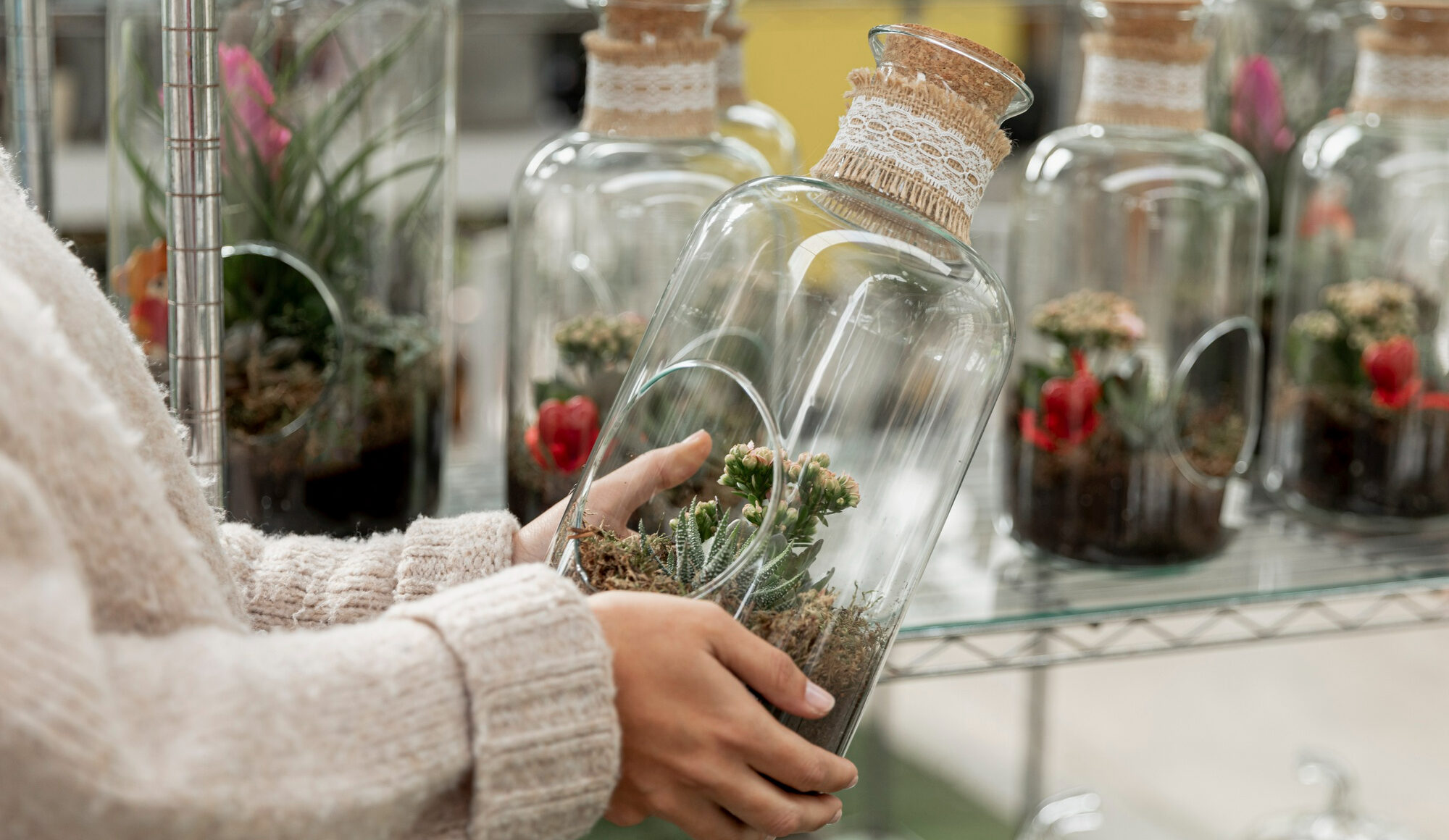
When choosing a terrarium container it is truly up to personal choice. The most important aspect to look for is that it has a large enough mouth to plant inside. You can use a mason jar, wide-mouth fishbowl, or even a large empty pickle jar. The wider the bowl, the easier it will be to fit more plants, soil, and decorative elements. Some people even use heavy plastic containers, but most prefer the look and feel of glass.
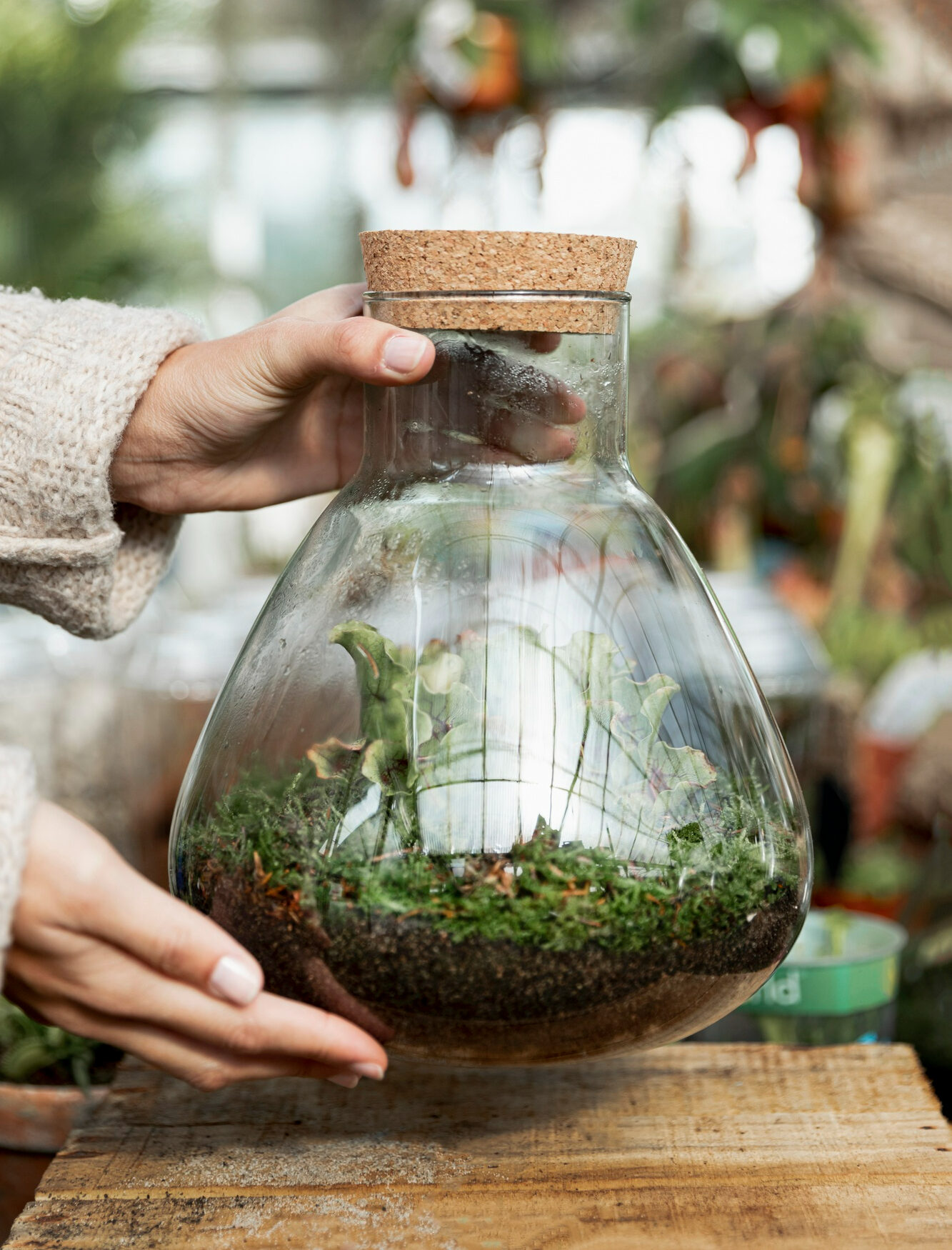
No terrarium is complete without all the goodies that go inside. Moss, rocks, seashells, potting mix, and any decorative pieces you’d like to add all go inside your container. Here is a breakdown of what you need and why.
When choosing plants for your terrarium, pick ones that are small enough to fit in your container. It is also crucial to make sure these plants can survive in this kind of living environment. There are so many plants to chose from, and the majority of them are easy to grow even a complete novice can have success. When they are in a closed terrarium, these plants rarely need water and will grow happily for years. Here are a few we offer at Patuxent Nursery.
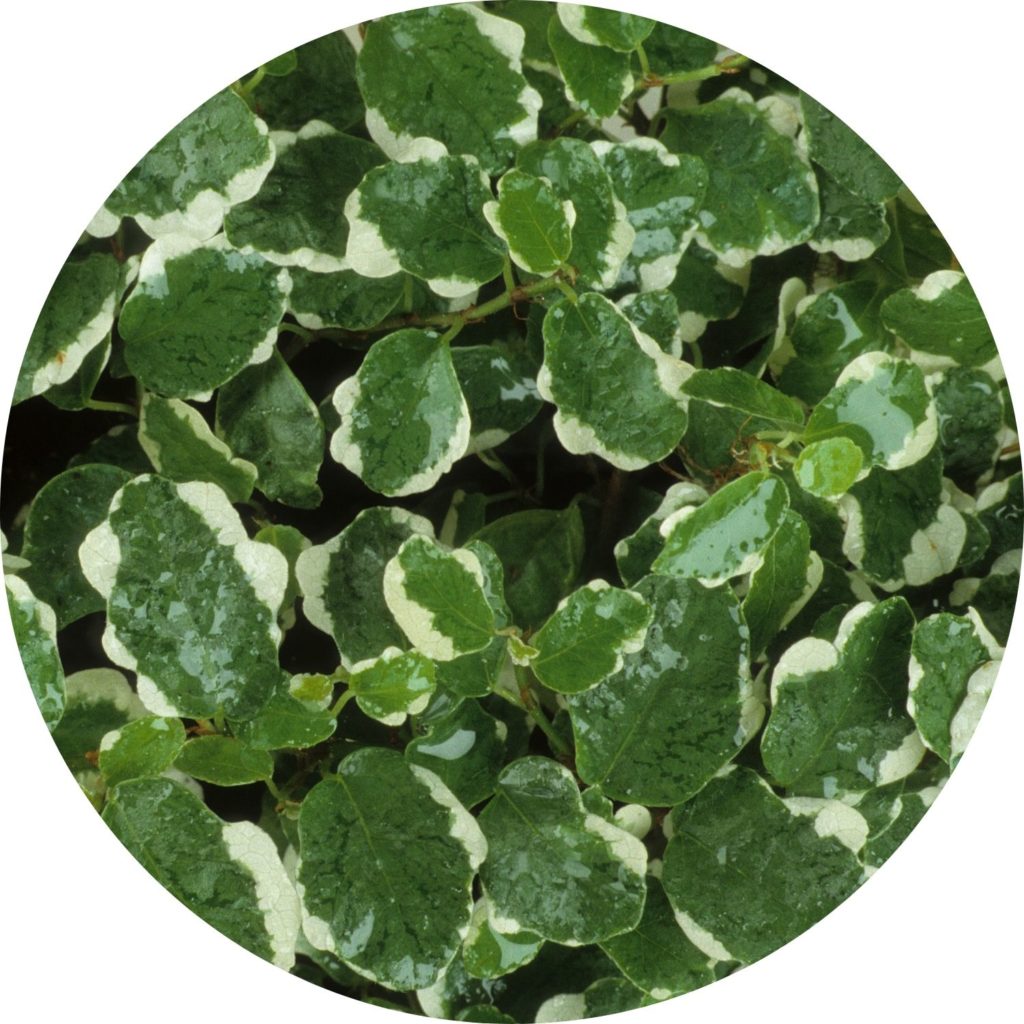
This plant has small, variegated heart-shaped leaves. It is a perennial climbing vine, and you can train it to creep up structures inside a large terrarium. This plant would add dimension to your container with other low-growing plants.
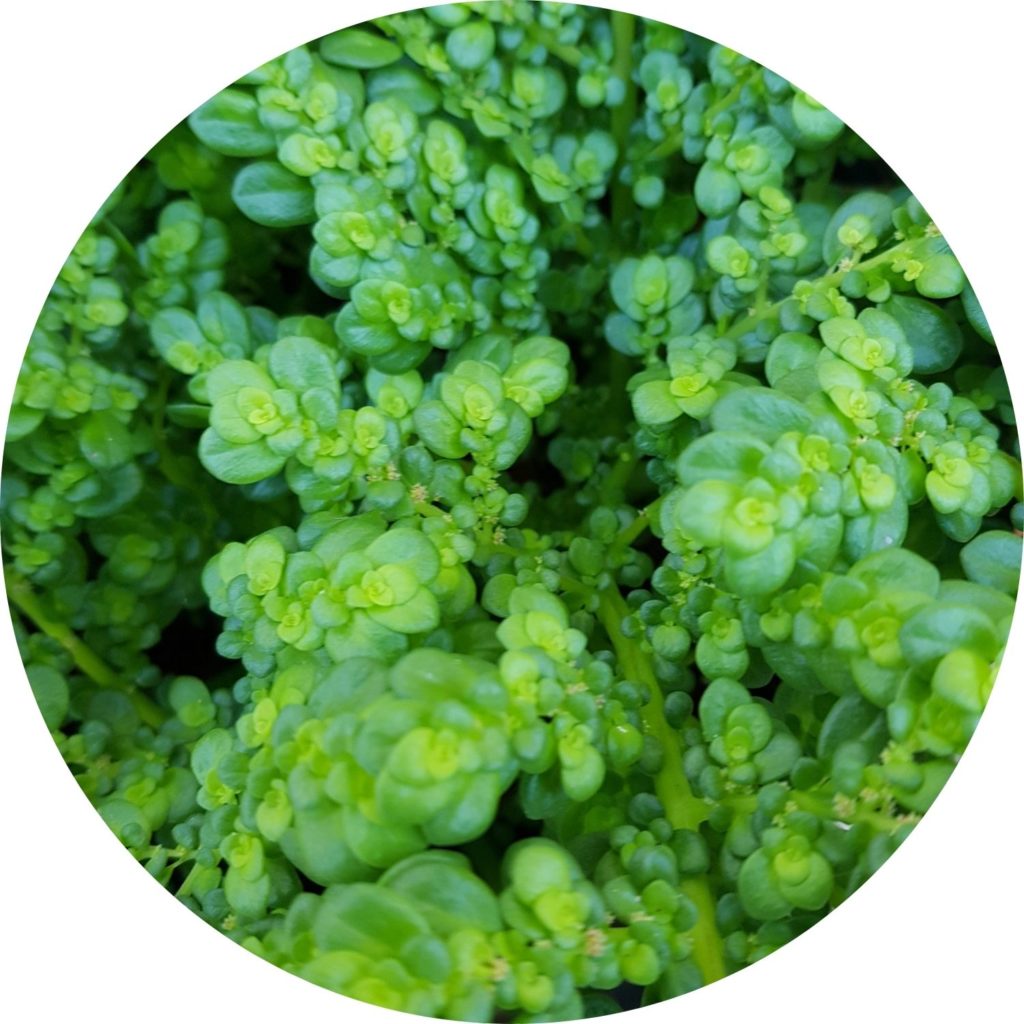
Despite the name, this plant is not a fern at all but a member of the Pilea family. They produce small leaves and vine similar to the Creeping Fig. They are a delicate and textured addition to any terrarium.
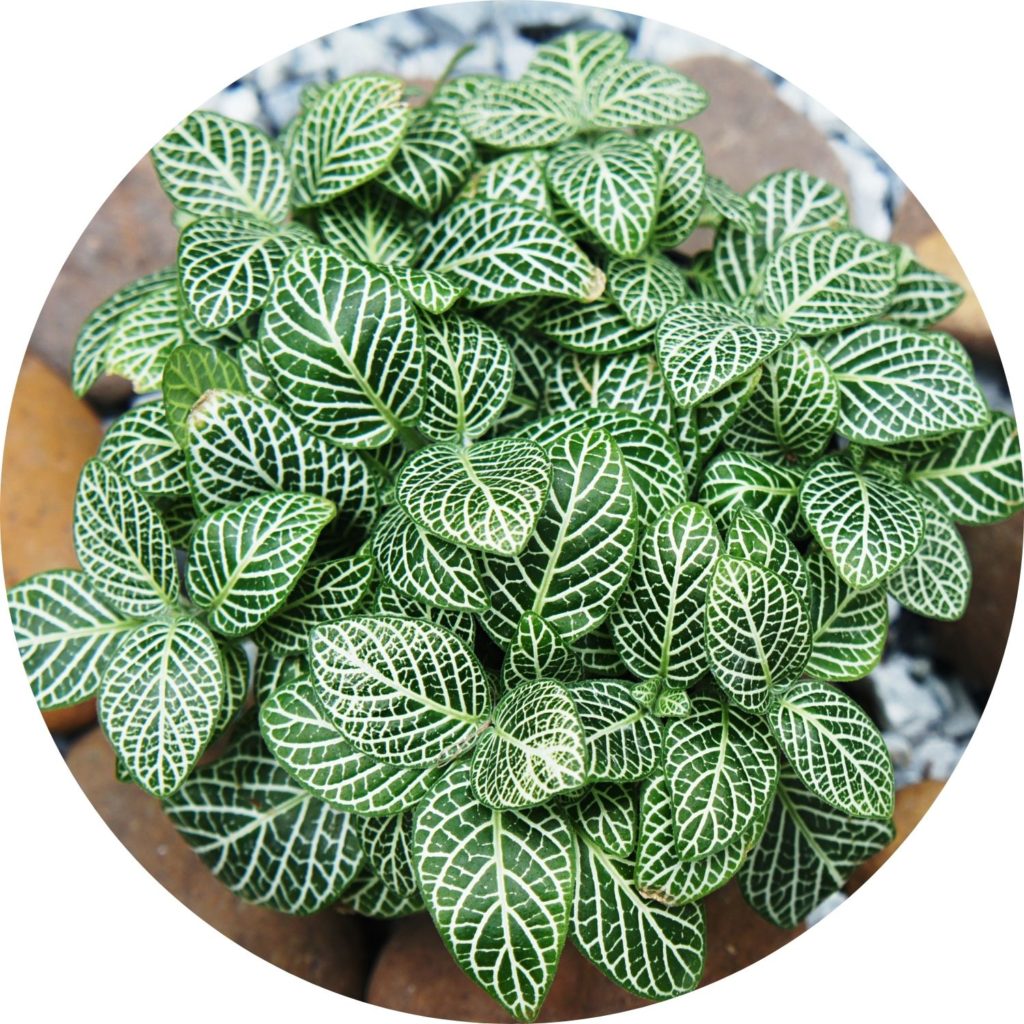
This spreading plant yields veined, deep-green leaves that can vary from silver-white, red, and pink. Thriving in humid conditions, they will be the perfect large-leaf plant for your terrarium, adding texture, color, and visual interest.
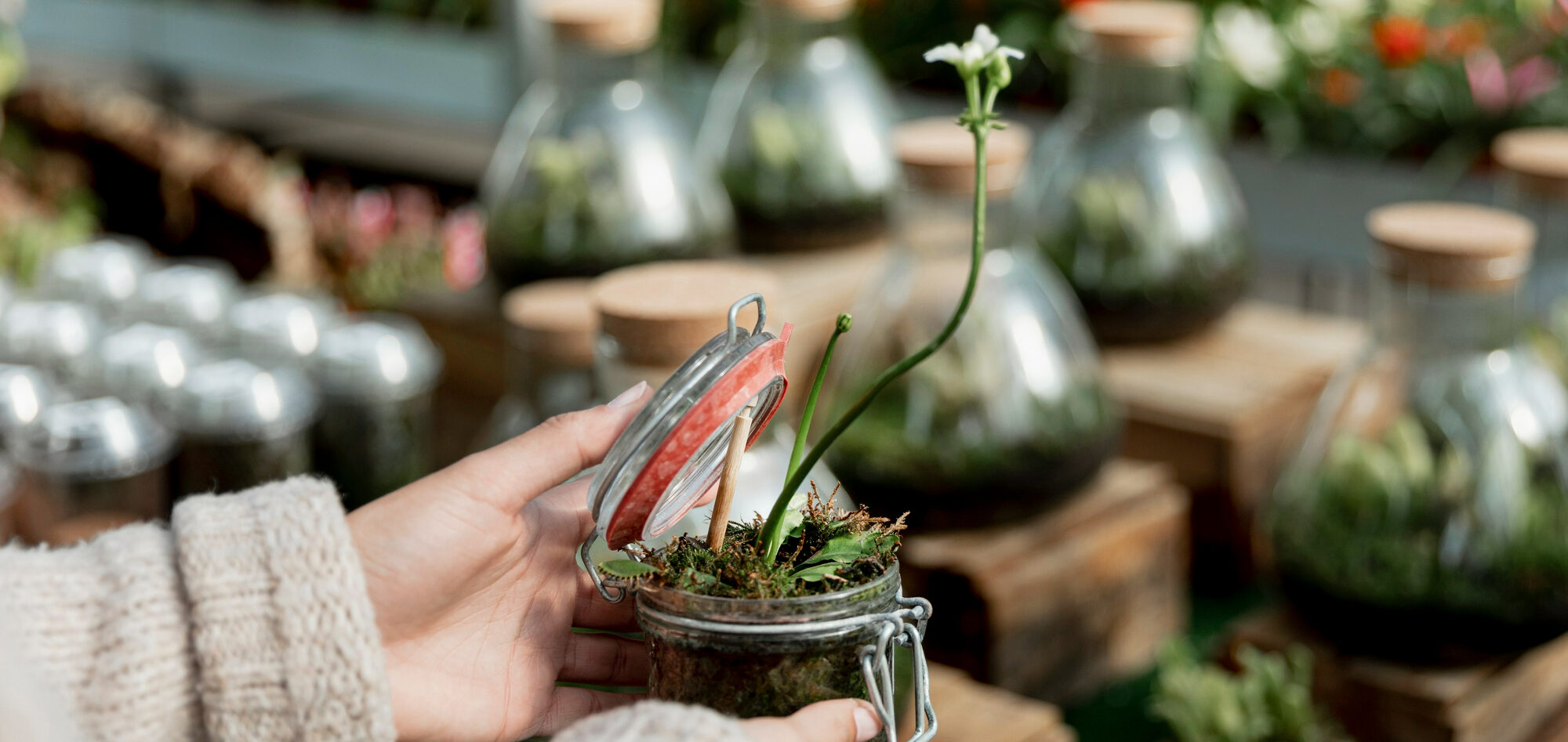
As mentioned before, taking care of a terrarium is very easy. You need to follow a few simple steps every couple of weeks to keep your terrarium happy and thriving.
Feel the soil to see if it is dry and needs some water. Fully and partially enclosed terrariums hold water much longer than most potted houseplants do. Terrariums hold in humidity, meaning they retain more water as well. If your soil is dry, water lightly so your plants don’t dry out.
Pruning your plants will not be necessary very often. However, if you notice any damaged or yellow leaves, gently take them off. If you have any trailing or spreading plants that are growing too big, prune them back so they stay the perfect size for the container.
This step is specifically for a fully closed terrarium. We recommend you take off the lid at least once a month to let your container dry out. Leave the top off until all the condensation had disappeared. If you accidentally added too much water, you can do this same method to help rid any excess water.